Content
Published:
This is an archived release.
Reduction in number of nursing home beds
The number of nursing home beds is dropping. In 2015 there were 39 674 beds, a reduction of 510 from 2014. The top level was in 2012, with 40 307 beds.
| 2015 | Percentage change | ||
|---|---|---|---|
| Users of care services | 2014 - 2015 | 2011 - 2015 | |
| 1Due to the transition to the new data source (A-ordninga), will not change figures for man-years be shown. Due to the transition, figures for planned absence and user-directed man-years will not yet be available. | |||
| Total | 275 200 | 1.0 | 2.4 |
| Users of home help only | 37 663 | -3.8 | -13.1 |
| Users of home nursing only | 82 400 | 5.5 | 17.4 |
| Users of both home help and home nursing | 62 437 | -1.2 | -1.8 |
| Residents in institutions, short term stay | 9 303 | 0.5 | 1.2 |
| Residents in institutions, long term stay | 33 547 | -1.0 | -1.9 |
| Other home-based services | 49 850 | 2.2 | 3.3 |
| Nursing and care institutions | Beds | ||
| Total | 40 708 | -1.5 | -1.4 |
| Percentage of private beds | 11.7 | 5.5 | 20.5 |
| Percentage of user adapted single rooms including bathroom/WC in institutions | 81.5 | 0.4 | 5.2 |
| Weekly physician hours per resident in nursing homes | 0.53 | 8.2 | 35.9 |
| Care staff1 | Årsverk | ||
| Total | 135 432.92 | .. | .. |
| Percentage of man-years within user directed services with health/social education | .. | .. | .. |
| Percentage of man-years within user directed services with health/social education | .. | .. | .. |
| Expenditure in municipal care services | NOK 1 000 | ||
| Care services, in NOK 1 000 | 101 758 849 | 0.8 | 22 |
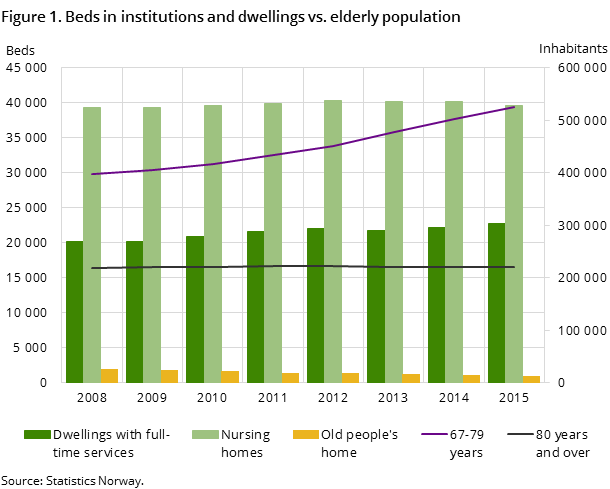
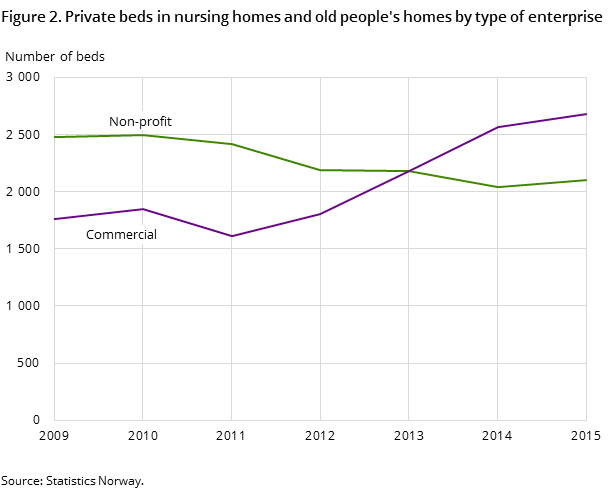
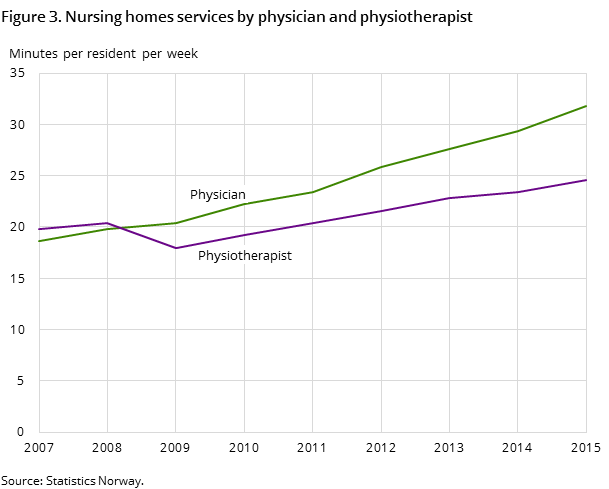
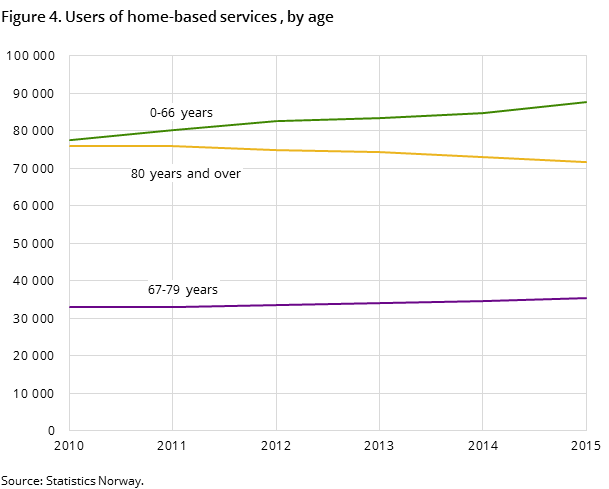
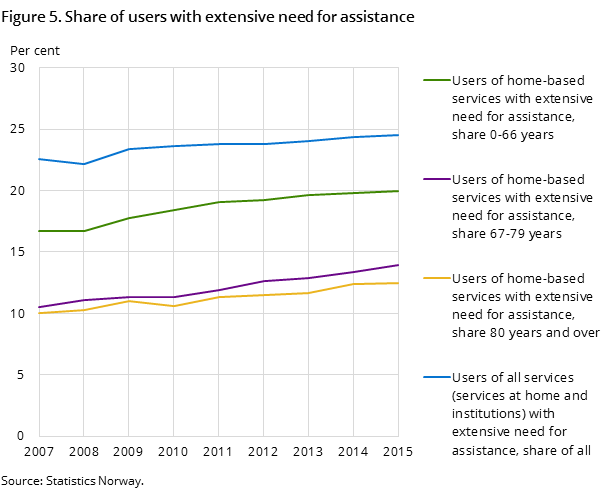
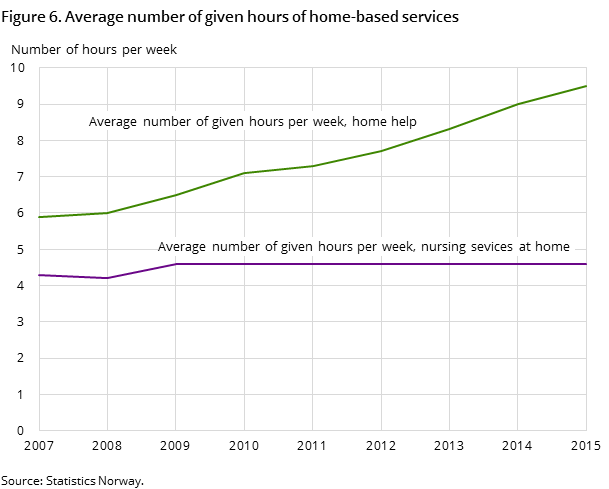
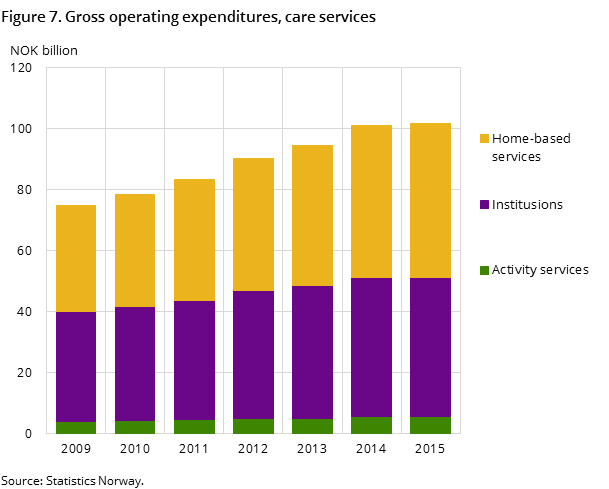
Almost half of the 428 municipalities showed a reduction in the number of nursing home beds, only 1 in 5 had an increase, while a third had no change. There has also been a reduction in the number of nursing home residents, together with a fall in expenditure.
The overall net decrease of beds can be due to several reasons:
• Many municipalities have reserved beds for patients in a need for urgent help over a few nights, a municipal service that has been enshrined in law in 2016.
• Institution beds have been getting replaced by dwellings with full-time home services for many years. This type of service is now also described as an alternative to nursing homes as per legislation from 1.7.2016.
• The elderly aged 80 years and over are the most frequent users of nursing homes. However, the number of people in this age group has fallen slightly in recent years, which means fewer beds have been needed.
Growing elderly population means a rising need for beds
People born in the baby-boom years, which started during World War II, will soon reach their 80s, resulting in a need for a nursing home bed or an adapted dwelling. A strong increase in care service investments since 2012 suggests that the municipalities are preparing for the rapid growth in the elderly population. So far, these investments have resulted in a higher standard of buildings, but not more beds. NOK 5.5 billion was spent in care investments in 2015; an increase of 77 per cent from 2012.
Private institutions show a significant increase in beds, both commercially and in non-profit organisations. Out of 4 800 private beds in 2015, 56 per cent were run commercially.
Increase in physician and physiotherapist man-years in institutions
The number of physician and physiotherapist man-years in institutions increased from 2014 to 2015. On average, each resident spends 32 minutes per week with a physician. The corresponding figure for physiotherapists is 25 minutes.
More younger users of home-based services, and more with extensive need for assistance
Also within the home-based services, there have been fewer users aged 80 years and over, while the younger users below 67 years increased by 3 per cent. This last age group now accounts for as much as 45 per cent of the total number of users receiving home-based services. In 2015, there were 195 000 users in total; an increase of 1 per cent from 2014.
The share of users with an extensive need for assistance is increasing for all age groups. Twenty per cent of users below 67 years have an extensive need for assistance, while the corresponding figure for users aged 80 years and over is 13. There is also an even increase in time given to users of home help. On average, users received 9.5 hours per week.
Weak increase in total care services expenditure, decrease for institutions
Care services expenditure increased by 1 per cent from 2014, and was close to NOK 102 billion. Institution expenditure decreased by NOK 70 million, amounting to NOK 46 billion. Simultaneously, urgent overnight help showed an expenditure increase of NOK 146 million, up to NOK 527 million.
The number of nursing and care service man-years was 135 000 in 2015. Due to a change in the data source, these figures are not comparable with earlier years.
Contact
-
Dag Ragnvald Abrahamsen
E-mail: dag.ragnvald.abrahamsen@ssb.no
tel.: (+47) 40 90 25 46
-
Øyvind Isachsen Berntsen
E-mail: oyvind.berntsen@ssb.no
tel.: (+47) 40 90 23 28
-
Bjarne Tautra Hoen
E-mail: bjarne.hoen@ssb.no
tel.: (+47) 40 90 25 99
-
Linda M. Allertsen
E-mail: linda.allertsen@ssb.no
tel.: (+47) 97 09 97 51
